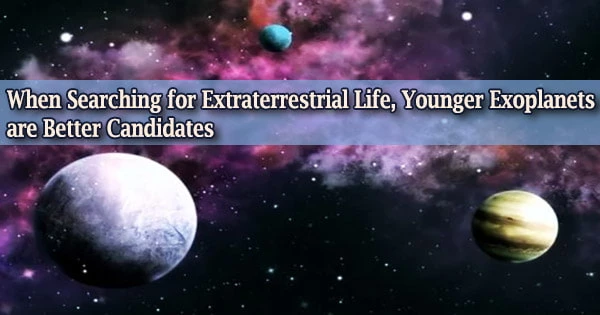New research from the Southwest Research Institute reveals that younger rocky exoplanets are more likely to support temperate, Earth-like climates as the scientific community looks for planets orbiting nearby stars that could possibly contain life.
In the past, researchers have concentrated on planets that are located in a star’s habitable zone, which is the range of temperatures where liquid surface water can exist. However, planets can still acquire conditions unsuitable for life even in this alleged “Goldilocks zone.”
It is also necessary for a planet to have enough heat to fuel a carbon cycle on a planetary scale in order to sustain temperate climates. The radioactive decay of the potassium, thorium, and uranium isotopes is a significant source of this energy.
A rocky exoplanet’s mantle convection, a slow creeping motion of the area between a planet’s core and crust that eventually melts at the surface, can be driven by this crucial heat source.
One of the main processes that adds CO2 to the atmosphere and maintains the planet’s warmth is surface volcano degassing. Planets are unlikely to have temperate, habitable climates like the Earth’s without mantle degassing.
“We know these radioactive elements are necessary to regulate climate, but we don’t know how long these elements can do this, because they decay over time,” said Dr. Cayman Unterborn, lead author of an Astrophysical Journal Letters paper about the research.
“Also, radioactive elements aren’t distributed evenly throughout the Galaxy, and as planets age, they can run out of heat, and degassing will cease. Because planets can have more or less of these elements than the Earth, we wanted to understand how this variation might affect just how long rocky exoplanets can support temperate, Earth-like climates.”
Exoplanet research is tough. The surface makeup of an exoplanet cannot be measured with current technology, let alone the interior.
Under the most pessimistic conditions, we estimate that this critical age is only around 2 billion years old for an Earth-mass planet and reaching 5-6 billion years for higher-mass planets under more optimistic conditions. For the few planets we do have ages for, we found only a few were young enough for us to confidently say they can have surface degassing of carbon today, when we’d observe it with, say, the James Webb Space Telescope.
Dr. Cayman Unterborn
However, by observing how light interacts with the elements in a star’s higher layers, scientists may determine the amount of certain elements in a star. By using these statistics as a rough approximation for the planets that circle a star, astronomers can determine what those planets are comprised of.
“Using host stars to estimate the amount of these elements that would go into planets throughout the history of the Milky Way, we calculated how long we can expect planets to have enough volcanism to support a temperate climate before running out of power,” Unterborn said.
“Under the most pessimistic conditions, we estimate that this critical age is only around 2 billion years old for an Earth-mass planet and reaching 5-6 billion years for higher-mass planets under more optimistic conditions. For the few planets we do have ages for, we found only a few were young enough for us to confidently say they can have surface degassing of carbon today, when we’d observe it with, say, the James Webb Space Telescope.”
This study used dynamical models and both direct and indirect observational data to identify the factors that most influence an exoplanet’s capacity to sustain a temperate environment.
The acceptable range of these parameters will be quantified by additional lab tests and computational modeling, especially in the period of the James Webb Space Telescope, which will enable more in-depth analysis of individual targets.
It will be feasible to measure the three-dimensional variation of extraterrestrial atmospheres with the Webb telescope. Scientists will be able to more accurately determine if a rocky exoplanet in a habitable zone is too ancient to be Earth-like because to the increased understanding of atmospheric processes and their interactions with the planet’s surface and interior provided by these measurements.
“Exoplanets without active degassing are more likely to be cold, snowball planets,” Unterborn said. “While we can’t say the other planets aren’t degassing today, we can say that they would require special conditions to do so, such as having tidal heating or undergoing plate tectonics. This includes the high-profile rocky exoplanets discovered in the TRAPPIST-1 star system. Regardless, younger planets with temperate climates may be the simplest places to look for other Earths.”





